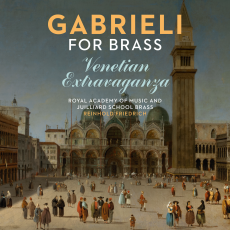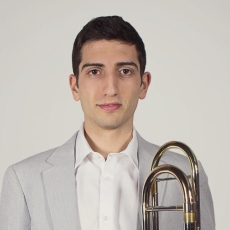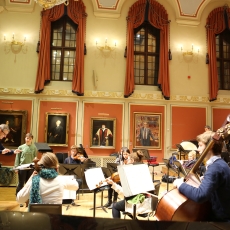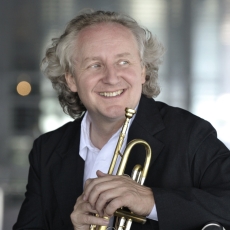Royal Academy of Music and Juilliard School Brass - Gabrieli for Brass - American Record Guide
I am always a sceptic about new recordings of Giovanni Gabrieli’s music. I want them to be about the music, not the players. I prefer Gabrieli on modern brass instruments, but not played like Mahler. It should be tempered magnificence. Fortes, not fortissimos. Gabrieli is not for showing brass superpowers.
So, what will the talented students of two of the world’s best conservatories do with it? What will renowned trumpeter Reinhold Friedrich have them do?
The first work, the 10-part ‘Canzon duodecimi toni II’, seems aimed directly at my likes and dislikes. I like the golden tone, restrained fortes, the unusual and expressive swells. There is a juicy dissonance at 1:06 that I never noticed before—no one else brings it out, but it’s right there in the score (measure 20). The ending fades beautifully. But I’m not fond of what every brass group does with this piece: they make it a double-tonguing showpiece. Fast, virtuosic lines—rattled off by a series of trumpets, several times—are impressive, but they are also pecky and brittle. There is a Concerto Palatino recording of this work that is too slow, but these lines are played by violins, and I like their ease and smoothness (July/Aug 2000).
The simple triad that opens the 12-part ‘Sonata octavi toni’ is a wondrous one with an amazingly unanimous, round tone. It is the first in a series of great chords, each bigger than the previous, each full in tone. Many brass groups would be unable to resist the temptation to play fortississimo, but this group shows that forte is better.
A number of the pieces are familiar fare, especially ‘Sonata pian e forte’, which for me is a Gabrieli test piece. How do these students and this conductor do with it? Quite well—good tempo, never too loud. The ending seems a little perfunctory, but overall it is sad and grand. Another favorite is the big, majestic program-ender, the 22-voice Sonata XX. The moment when all those voices come together (1:58) is warm and beautiful, the same passaged reprised at 2:13 more assertive and space-filling.
Six of the album’s 19 selections are by composers other than Gabrieli. Some, like Lappi’s ‘La Serafina’, will be familiar to people who have played brass quartets.
All in all, it is a very satisfying Gabrieli recording, strongly recommended.
It is a little surprising that the notes make no mention of organist Benedict Williams, a student at the Royal Academy and the one person who plays on all 19 selections. Perhaps it’s because the organ is barely noticeable most of the time; but without it, the recorded sound would be much thinner and not so stable. Some of the wondrous last chords sound that way because the organ hangs on after the brass give way. The album was recorded in the reverberant sanctuary of St Jude on the Hill in Hempstead Garden Suburb, London.



